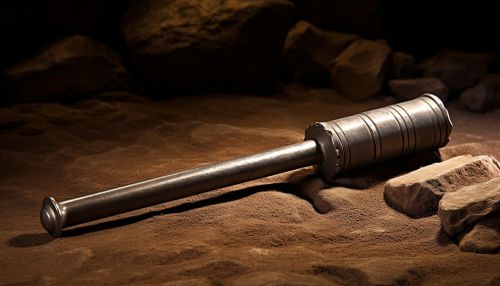Soil Corer
Introduction
Soil coring is a simple method that is used to collect soil samples for soil profile examination and/or chemical analysis. Soil corers are tools used in this process, which are typically cylindrical in shape and are driven into the ground to extract a core of soil. The soil corer is a critical instrument in the field of soil science, agronomy, geology, and environmental science.


Design and Function
A soil corer is designed to extract soil samples with minimal disturbance to the soil structure. The typical design of a soil corer includes a hollow cylindrical tube, a handle, and sometimes a footstep for easier penetration into the soil. The cylinder is usually made from a durable material such as stainless steel or hardened plastic, and the cutting edge is often sharpened to facilitate easier insertion into the soil.
The function of a soil corer is to collect a core sample of soil that includes all the layers (or horizons) present in the profile. This core sample can then be used to examine the physical and chemical properties of the soil, such as texture, structure, color, moisture content, and nutrient composition. The core sample can also be used to identify and quantify the presence of organisms, roots, rocks, and other materials within the soil.
Types of Soil Corers
There are various types of soil corers, each designed for specific applications and soil conditions. The main types include:
Auger Corers
Auger corers are the most common type of soil corer. They are designed to collect soil samples from a specific depth. The auger corer is twisted into the soil and then pulled out, bringing with it a core of soil.
Push Corers
Push corers are designed to be pushed or hammered into the soil. They are often used in harder soils where an auger corer would be difficult to use.
Piston Corers
Piston corers are used for collecting undisturbed soil samples from soft soils or sediments. The piston corer uses a piston to push the soil sample into the corer tube.
Split Tube Corers
Split tube corers are designed to collect undisturbed soil samples in hard soils. The corer is driven into the soil and then split open to reveal the soil core.
Soil Coring Techniques
The method of soil coring used depends on the type of soil, the depth of the sample, and the specific research questions being addressed. Some common soil coring techniques include:
Direct Push
In the direct push technique, the soil corer is pushed directly into the soil using manual force or a mechanical device. This technique is commonly used with push corers and is suitable for softer soils.
Rotary Drilling
In the rotary drilling technique, the soil corer is rotated to drill into the soil. This technique is commonly used with auger corers and is suitable for harder soils.
Percussion Drilling
In the percussion drilling technique, the soil corer is hammered into the soil. This technique is commonly used with split tube corers and is suitable for very hard soils or rocky soils.
Applications of Soil Coring
Soil coring is used in a wide range of applications, including:
Soil Science
In soil science, soil coring is used to study the physical and chemical properties of the soil. This can include studies of soil formation, classification, and mapping.
Agriculture
In agriculture, soil coring is used to assess soil fertility and to guide fertilizer application. It can also be used to study the effects of agricultural practices on soil health.
Environmental Science
In environmental science, soil coring is used to study the effects of pollution on soil health. This can include studies of soil contamination by heavy metals, pesticides, or other pollutants.
Archaeology
In archaeology, soil coring is used to study past human activity. This can include studies of ancient agriculture, settlement patterns, and environmental change.
